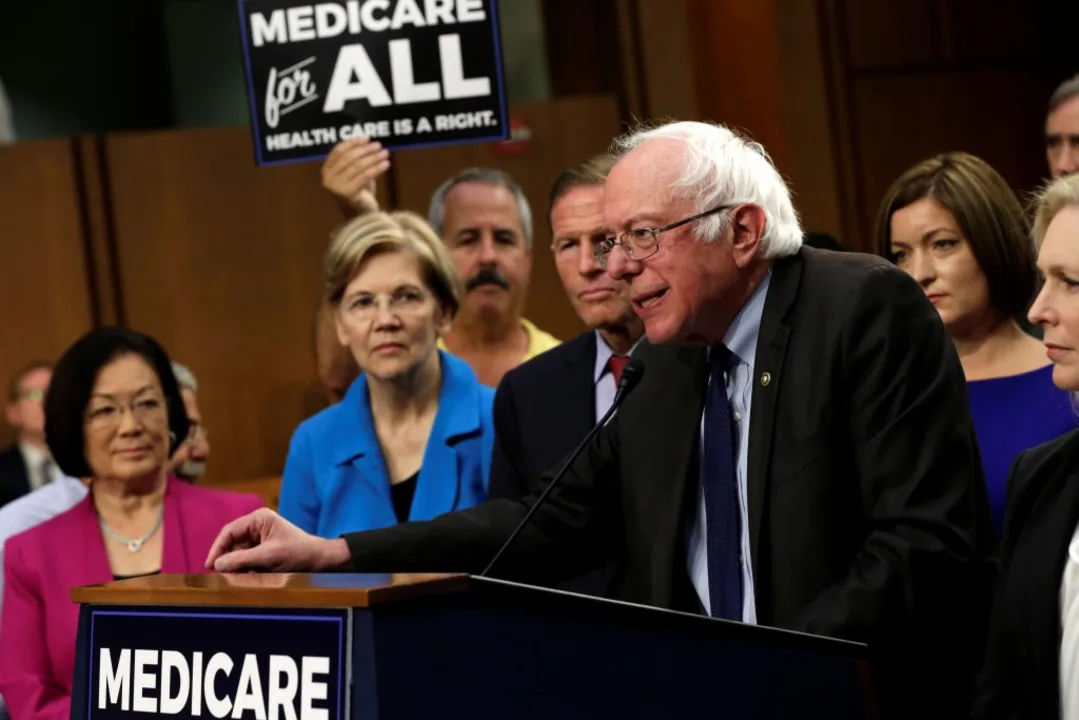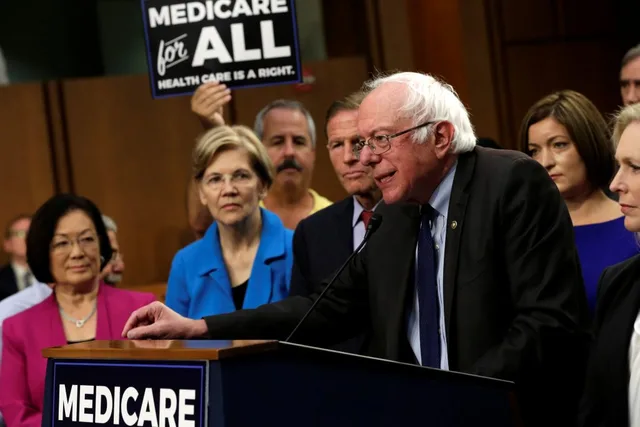Understanding the High Costs of US Healthcare
When it comes to healthcare, America is the most expensive country in the world. The cost of medical care in the United States is nearly twice as much as it is in other developed countries. While many people are aware of the high costs of US healthcare, what they don’t know is why.
Insurance and Pricing
The primary reason for the high cost of US healthcare is the insurance system. In other countries, healthcare is funded by the government, meaning that it is available for free or at a low cost. In the United States, however, healthcare is largely funded by private insurance companies. Insurance companies have the power to set prices for medical services, and they often charge more than what is necessary. This results in higher costs for both the consumer and the provider.
Lack of Bargaining Power
Insurance companies also have the ability to negotiate prices with providers. This means that they can drive down costs by bargaining for lower prices. Unfortunately, many providers lack the bargaining power to negotiate lower rates, leaving the consumer with higher costs.
High Administrative Costs
Another factor that contributes to the high cost of US healthcare is the high administrative costs. In the US, most healthcare providers have to hire staff to process and submit paperwork to insurance companies. This paperwork is often complex and time-consuming, resulting in higher administrative costs.
Profits for Pharmaceutical Companies
The final factor that contributes to the high cost of US healthcare is the profit margins of pharmaceutical companies. Pharmaceutical companies often charge high prices for medications and treatments, resulting in higher costs for consumers.
Examining the Issues with Accessibility in US Healthcare
The United States healthcare system is one of the most expensive in the world, yet its outcomes are lower than those of many other developed countries. The US healthcare system has a number of issues related to accessibility that are preventing many people from receiving the care they need. In this article, we will examine the issues of healthcare accessibility in the US and discuss potential solutions.
High Costs of Care
One of the major issues with the US healthcare system is the high costs of care. Even with insurance, many people find it difficult to afford basic medical care. This is especially true for those who are uninsured or underinsured. Even for those with insurance, the cost of copays and deductibles can be prohibitively expensive.
Inequitable Access to Care
Another issue with US healthcare is the inequitable access to care. Many low-income, elderly, and minority populations are unable to access the care they need due to financial or geographical barriers. This lack of access to care can lead to poorer health outcomes, as well as disparities in health between different populations.
Lack of Primary Care Providers
The US also has a shortage of primary care providers, which can lead to long wait times for appointments and limited access to care. This is especially true in rural areas, where there may be few primary care providers. This lack of access to care can have a detrimental effect on health outcomes.
Unaffordable Prescription Drugs
Prescription drugs are often unaffordable for many people in the US, as they are often priced higher than in other countries. This can lead to people not taking the medications they need, which can lead to poorer health outcomes.
Lack of Dental Care
Dental care is often overlooked in the US healthcare system. Many people are unable to afford the cost of dental care, which can lead to poor oral health and other health issues. This lack of access to dental care can be especially detrimental for children, as preventive care is key for good oral health.
Unaffordable Mental Health Care
Mental health care can be extremely expensive in the US, and many people are unable to afford the cost of care. This lack of access to mental health care can lead to poorer mental health outcomes, as well as increased risk of suicide.
An Overview of the US Healthcare System's Struggles
The US healthcare system has been a source of constant debate and turmoil for decades. With healthcare costs skyrocketing, access to care becoming more difficult to attain, and a lack of quality in some areas, it’s no surprise that many Americans have become frustrated with the current state of healthcare.
One of the biggest issues with the US healthcare system is the cost of care. The US spends more on healthcare than any other developed country, yet it still lags behind in many areas of health outcomes. This is due to the fact that the US healthcare system is highly fragmented and inefficient, leading to higher costs and fewer resources available to provide care.
Another struggle with the US healthcare system is access to care. Due to the high costs of healthcare, many Americans are unable to afford coverage and have to go without necessary treatments or medications. This lack of access can lead to poorer health outcomes and an overall decrease in quality of life.
The quality of care offered by the US healthcare system is another area of concern. The US healthcare system is often criticized for its lack of quality, with many medical facilities offering substandard care and inadequate resources. This lack of quality can lead to serious health issues and can even be life-threatening.
Finally, the US healthcare system is often criticized for its lack of transparency. Many patients are unaware of the true costs of their treatments and medications, leading to surprise bills and unexpected expenses. Additionally, many medical providers are not transparent about the outcomes of treatments or the potential side effects, leaving patients in the dark about their health and wellbeing.
Analyzing the Problems with Quality of Care in US Healthcare
The US healthcare system is in dire need of reform. Quality of care in the US is severely lacking, making it difficult for patients to get the care they need. In this article, we will analyze the problems with quality of care in the US healthcare system and discuss potential solutions.
Lack of Accessibility
One of the biggest issues with the US healthcare system is the lack of accessibility. Many Americans are unable to access quality healthcare due to the high cost of insurance, lack of insurance, or geographical location. For example, rural communities often have limited access to healthcare facilities and providers, making it difficult for people to get the care they need. In addition, insurance companies often limit the number of providers and treatments that are covered, making it difficult for patients to get the care they need.
Inadequate Coverage
Another issue with the US healthcare system is inadequate coverage. Many insurance plans have high co-pays and deductibles, making it difficult for patients to afford the care they need. In addition, insurance companies often deny coverage for certain treatments or medications, leaving patients with no options for care. This can be especially problematic for patients with chronic or long-term illnesses, as they may not be able to afford the care they need.
Poor Quality of Care
The US healthcare system also suffers from poor quality of care. Many healthcare providers are overworked, underpaid, and lack access to the necessary resources to provide quality care. In addition, many healthcare facilities are outdated and lack the equipment and technology needed to provide high-quality care. As a result, patients often receive inadequate care, leaving them at risk of injury or death.
Lack of Patient Advocacy
Lastly, the US healthcare system lacks patient advocacy. Patients often feel powerless and unable to get the care they need due to the complex and confusing healthcare system. Patients are often unable to navigate the system on their own, leaving them feeling helpless and at the mercy of insurance companies and healthcare providers.
Potential Solutions
In order to improve the quality of care in the US healthcare system, several steps need to be taken. First, the government must take action to increase access to healthcare. This includes expanding Medicaid and increasing subsidies for those who cannot afford health insurance. In addition, insurance companies should be required to provide adequate coverage and not deny coverage for certain treatments. Finally, healthcare providers should be given the resources they need to provide quality care, such as access to technology, training, and support.
Exploring the Challenges of US Healthcare Reforms
The US healthcare system has long been a source of debate and controversy. Despite being one of the most advanced healthcare systems in the world, the US still struggles to provide its citizens with high quality, affordable healthcare. Over the years, numerous reforms have been proposed to try to improve the situation, but the challenges remain. In this article, we will explore the main challenges of US healthcare reform and discuss the potential solutions.
Lack of Access to Quality Care
One of the biggest challenges facing US healthcare reform is the lack of access to quality care for many Americans. Despite advances in healthcare technology, many Americans still lack access to basic medical care and treatments. This has led to a rise in preventable illnesses and unnecessary deaths, as well as a rise in healthcare costs. To address this issue, reforms need to focus on expanding access to quality healthcare for all Americans, regardless of income level.
Cost of Care
Another key challenge facing US healthcare reform is the high cost of care. Healthcare costs in the US are some of the highest in the world, making it difficult for many Americans to access the care they need. To address this issue, reforms need to focus on reducing healthcare costs, while also ensuring quality care is available to all. This could include expanding access to public health insurance, negotiating lower prices with pharmaceutical companies, and encouraging the use of generic drugs.
The Role of Insurance Companies
Insurance companies have a large role to play in US healthcare reform, as they are the primary source of funding for medical care. Insurance companies have a vested interest in controlling healthcare costs, which can lead to them denying claims or refusing to cover certain treatments. To address this issue, reforms need to focus on increasing oversight and regulation of insurance companies, while also ensuring Americans have access to affordable and comprehensive coverage.
Conclusion
The US healthcare system faces numerous challenges, but with the right reforms, it is possible to improve the situation. By expanding access to quality care, reducing healthcare costs, and increasing oversight of insurance companies, the US can ensure all Americans have access to the care they need. It is up to policymakers to make these changes a reality, and ensure the US healthcare system is one of the best in the world.


